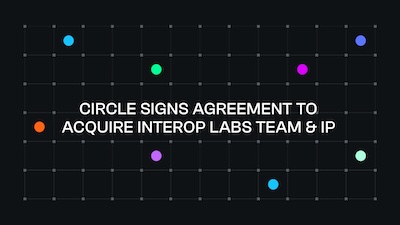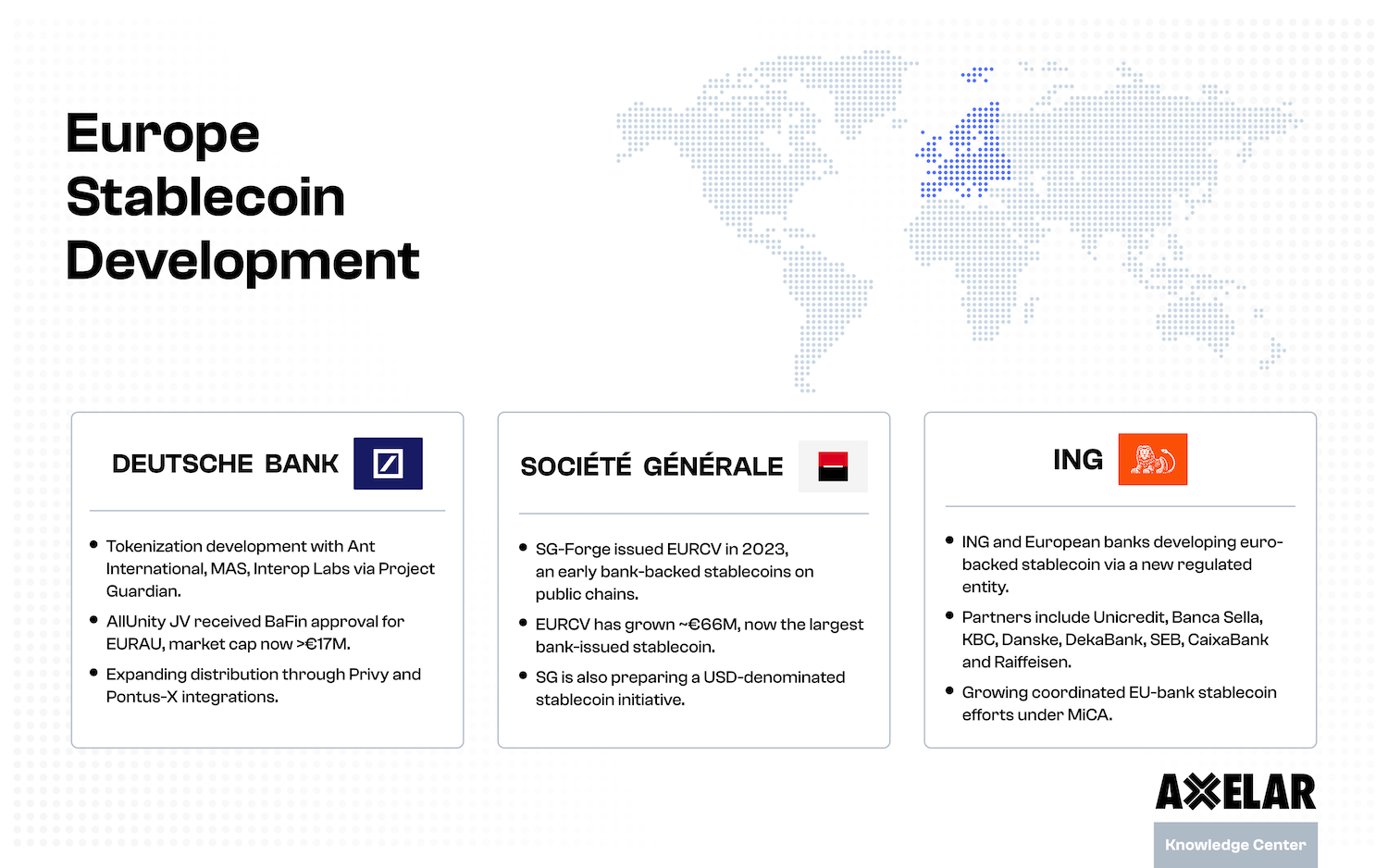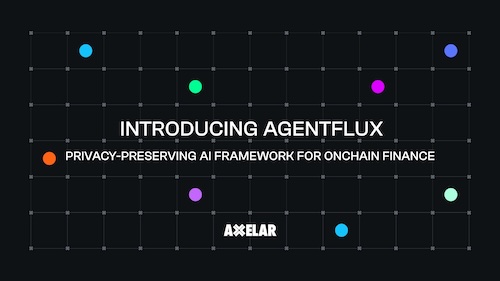An Introduction to the Axelar Network
Table of Contents


Axelar’s mission is to unify all blockchains to increase worldwide participation in new decentralized economies, also known as “Web3." Axelar empowers developers with technologies that access assets and capabilities from any blockchain and enable blockchain as a popular, new development platform, like iOS or the World Wide Web – an "internet of blockchains."
Think of Axelar as:
- An air traffic control system that handles transportation, routing and customs / border control (validation) between blockchains
- A translator between multiple languages - in this case, different protocols.
Axelar is a blockchain that connects blockchains. Like the public blockchains it connects, information that moves across Axelar network is verified -- so it's secured as an "internet of money," beyond the internet of information. That's possible due to AXL, the native token that incentivizes decentralized verification of transactions on Axelar network.
Tldr
- Axelar is a blockchain that connects blockchains, offering robust cross-chain communication and establishing an "internet of blockchains" as a universal development platform.
- General Message Passing (GMP) facilitates secure, Turing-complete cross-chain computation.
- Cross-chain messages are secured by a dynamic set of validators running proof-of-stake consensus.
- The AXL token ($AXL) plays a crucial role in staking, governance, and transaction fees within the Axelar network. Additionally, Axelar incorporates safety measures like code audits, bug bounties and rate limits.
- Developers interact with SDKs and APIs, turning all of Web3 into a powerful new development platform.
- The Axelar Virtual Machine (AVM), powered by Cosmwasm, enables full-stack interoperability, transforming interoperability into a programmable layer, supporting services and tools that automate smart contract deployment and management across multiple blockchain ecosystems.
- Axelar's growth is reflected in its unique set of metrics, such as cross-chain transaction count and active users. It also hosts an expansive ecosystem of cross-chain applications, spanning various sectors.
- Its flexible cross-chain-communication capabilities enable a wide range of use cases, from cross-chain swaps to the creation of wallets with universal borrow-lend features and blockchain-based gaming experiences.
How Axelar works
As a blockchain that connects other blockchains, Axelar stands out among interoperability networks and cross-chain bridge providers. As a blockchain, it establishes a programmable cross-chain layer, capable of running smart-contract logic. This allows the Axelar network to automate tasks and abstract away complexities for both developers and end users.
The Axelar tech stack

The Axelar network has three key components across two functional layers.
1. A decentralized network
The first is the decentralized network itself, supported by a dynamic set of validators that are responsible for maintaining the network and executing transactions. The validators run the cross-chain gateway protocol, which is a multi-party cryptography overlay that sits on top of Layer 1 blockchains. They are responsible for performing read and write operations to Gateways deployed on connected external chains, applying proof-of-stake consensus to verify events on those chains.
2. Gateway smart contracts
Gateways are installations on connected blockchains. On EVM chains, they are smart contracts. Validators monitor Gateways for incoming transactions, which the validators read. They then come to consensus on the validity of that transaction; once agreed, they write to the destination chain’s Gateway to execute the cross-chain transaction. The validators and Gateways compose the core infrastructure layer.
3. APIs and developer tools
Sitting on top of the validators and gateways are the APIs and SDKs (the libraries and tools that enable developers to access the Axelar network easily). This is the application-development layer that developers will use to compose across any two chains in a single hop, adding universal interoperability to their blockchains and applications. It includes services like:
- Axelar Gas Services, which automate conversions into AXL and destination-chain gas tokens.
- One-time deposit addresses, which automate routing, allowing applications to expose a simple deposit address -- the same onramp used by centralized exchanges, but completely decentralized.
- Developer tool suites such as Interchain Token Service, enabling developers to issue and manage Interchain Tokens, which maintain their fungibility and custom functionality, cross-chain.
General Message Passing
General Message Passing (GMP) extends beyond the capabilities of traditional bridges, allowing applications to send and receive any payload cross-chain. This includes function calls, data, wrapped assets, etc. Logic like function calls enables applications to deliver a one-click user experience cross-chain. General Message Passing securely syncs state between various ecosystems, supporting sophisticated combinations of functions residing on multiple chains.

GMP not only connects blockchains but also fosters a composable and interoperable Web3 landscape, ushering in the possibility of a "Web3 Super App" that composes network effects – a phenomenon that could not exist on the traditional internet, due to network-effect next generation of decentralized applications. For a more detailed exploration of Axelar's components and functionality, please visit docs.axelar.dev.
Hub-and-spoke architecture
Axelar's architecture is built using a hub-and-spoke topology. With Axelar acting as a central hub, individual blockchains (the spokes) connect to Axelar rather than directly to each other, enabling a one-to-many connection. This enables Axelar-wrapped tokens like axlUSDC and axlETH to move freely between connected chains.
On bridges and cross-chain networks that employ a pairwise, or peer-to-peer topology, all bridged tokens must route back through their native blockchains, each time they move between chains.
Axelar's hub-and-spoke network topology is also a security feature: problems on one connected chain can be contained. If an asset depegs on Chain A, a hub-and-spoke network can isolate the problem to Chain A. A pairwise network can’t do that. Read more about how Axelar's hub-and-spoke topology works in emergency situations.

The AXL token: cross-chain security & fees
At the core of Axelar's security approach is proof-of-stake consensus – the same approach as many of the chains it connects – powered by the AXL token. Proof-of-stake relies on a dynamic and permissionless validator set: anyone can accumulate stake and provide security for the network. This contrasts with the permissioned multisig or proof-of-authority setups used by other cross-chain solutions, setting Axelar apart as a decentralized and secure solution. Uniswap, the largest DEX in Web3 and a recognized technical leader, approved Axelar's security approach for connecting its applications cross-chain and published a thorough review. Instead of pairwise cross-chain bridges, applications and users can rely on a network architecture that provides a uniform code base and governance structure.
The AXL token ($AXL) plays a critical role in the Axelar network by supporting:
- Staking and security: Tokenholders stake AXL, contributing to network security and earning rewards in return.
- Governance: AXL holders can vote on proposals such as parameter changes or protocol upgrades.
- Transaction fees: AXL is used to pay transaction fees, but network users don't need to hold the token themselves. The backend smart contracts handle conversions, ensuring users pay gas fees only once, in the source-chain token. (See diagram, below.)

In Axelar's proof-of-stake approach, tokenholders stake AXL with a dynamic set of validators that produce new blocks, participate in multi-party signing and vote on external chain states. To disrupt the system or cause harm, an adversary would need to compromise a supermajority of validator nodes. Axelar's proof-of-stake consensus is designed to maximize decentralization, thus minimizing the risk of network compromise. More information on Axelar's consensus model can be found here.
Axelar furthers its commitment to decentralization with the implementation of quadratic voting, which helps counteract power concentration in standard proof-of-stake systems. In this model, the number of votes each validator receives becomes a square root of their stake, making it more challenging for validators with larger stakes to dominate the voting process. It's worth noting that this quadratic voting system applies to validation and processing of cross-chain transactions but also to the underlying consensus that follows the standard PoS staking model for block production and rewards. You can read more about this in Axelar's quadratic voting post. Axelar is also prepared to respond to potential failures, malicious or accidental, with additional safety measures such as rate limits on major assets, key rotations on the network, and regular audits of the Axelar network code. Application-level security add-ons are also supported for developers to build custom cross-chain security policies. More details on these measures are available here.
Network metrics
The Axelar network employs a unique set of metrics to gauge its growth and performance. The most important of these is the cross-chain transaction count, a significant indicator of all use cases accommodated by Axelar GMP. Other essential metrics include active users, connected chains, deployed dApps, transfer volume, and TVL. These metrics offer a comprehensive view of Axelar's performance and growth. For a more in-depth exploration of these metrics, refer to our blog post.
The Axelar ecosystem
Axelar is more than a connecter of blockchains, it is a programmable cross-chain layer that enables Axelar to deliver full-stack interoperability. Axelar and the AXL token support a growing ecosystem of applications that span Web3 as a chain-agnostic development platform. This is accomplished through tools and services that create the "Internet of blockchains" and open Web3 to a new generation of developers and users.
The Axelar ecosystem of cross-chain applications
The Axelar network supports a rapidly growing ecosystem of cross-chain applications. This ecosystem spans a variety of sectors, including DeFi, NFTs, infrastructure, payments and wallets. Key applications like Sommelier and Squid make innovative use of Axelar's API to provide unique user experiences.


Check out an in-depth look at the hundreds of protocols building the future of web3 on Axelar here.
Cross-chain use cases
Axelar's flexibility and cross-chain-communication capabilities pave the way for a variety of exciting use cases. These range from enhancing DEX operations to fostering novel DeFi and gaming experiences.
Cross-chain swaps: Axelar enables users to exchange native tokens for other native tokens across different chains on a decentralized exchange with just one click. Protocols such as Squid, built with Axelar GMP, facilitate these seamless cross-chain swaps.
NFT + DeFi: Axelar's capabilities extend to revolutionizing wallet services, enabling the development of wallets with universal borrow-lend features. This means NFTs on Ethereum can be used as collateral in DeFi apps on any chain.
Universal AMM & lending: The Axelar network paves the way for an AMM or lending protocol to pool liquidity and collateral from any asset, on any chain. Prime Protocol, for instance, utilizes Axelar GMP to offer a chain-agnostic prime brokerage service, achieving cross-margin functionality that's traditionally expected in conventional markets but has been missing in DeFi.
Cross-chain synthetic assets: With Axelar, developers can call data from dApps on other chains to index derivatives on the chain that best fits their use case, opening up opportunities for diversified and dynamic asset management.
Open gaming: Axelar can turn any asset on any chain into a currency or credential, widening the possibilities for blockchain-based gaming experiences.
Cross-chain governance: DAOs can use Axelar to manage cross-chain activities. An example of this is Axelar's integration with Filecoin, enabling DataDAOs to manage data across chains in a decentralized way. This empowers DAOs overseeing essential data sets to build applications on any blockchain while seamlessly integrating with Filecoin's premier decentralized storage protocol.
Introduction to the Axelar Virtual Machine

Building on one blockchain is complex enough. Building cross-chain applications is more complex to the nth degree. Axelar is uniquely positioned to simplify cross-chain development. As a blockchain that connects blockchains, Axelar is uniquely capable of running secure smart-contract logic between chains. That's the foundation of the Axelar Virtual Machine (AVM).
Powered by Cosmwasm, the AVM enables smart contracts on Axelar that automate complex tasks involved in cross-chain deployments. Here's an introduction to some of the first products to launch, built on the Axelar VM. Read about the Axelar Virtual Machine here.
Interchain Token Service
Interchain Token Service (ITS) is one of the first projects to launch, built on AVM. It is a product suite that allows application developers to issue Interchain Tokens. Unlike standard bridged tokens, Interchain Tokens maintain fungibility and custom functionality cross-chain. ITS makes deploying and managing Interchain Tokens possible with the click of a button. Read more about ITS.
Interchain Maestro
The Interchain Maestro introduces a new paradigm for building in the interchain: build once, run everywhere. Think of it as Kubernetes for Web3 – a set of orchestration contracts and templates to help design, deploy and manage your dApp across multiple chains. Interchain Token Service is part of Interchain Maestro.
Interchain Amplifier
Interchain Amplifier supports simple and permissionless setup for new connections to the Axelar network. Developers can quickly and easily connect new blockchains, ecosystems or validation resources to add new network properties, such as improved security or better delivery and availability.
Developers can also set up custom connectivity paths with chains thus connected. This can enhance security at the application layer. In a blog introducing multi-path routing, we describe how this works.
Looking to the future
Axelar was initially conceived as a bet on a future that would embrace multiple chains. That bet has now paid off: leading applications and ecosystems are building and growing via cross-chain connections that are both sophisticated and essential.
Axelar now operates as the Stripe of Web3, facilitating effortless interaction between any application or asset on any chain. However, given the early stages of Web3 infrastructure, an earlier and more fundamental internet analogy is needed. At this early stage, providing a secure cross-chain connection is not enough. Developers who are already active in Web3 must be free to experiment and lead with new technologies that advance blockchain infrastructure. Developers outside Web3 must come to see blockchain technology as an enabler for applications that are global in scale and that put users first.
Axelar is building the full-stack interoperability layer to make this vision a reality and increase worldwide participation in Web3, playing a similar role as Akamai and other Content Delivery Networks (CDNs) that connected the various networks of the internet to support Web 2.0 companies such as YouTube. Without these connective overlays, the business models that drove the growth of the internet were not even visible, let alone possible.
Today, we are facing a similar inflection point in the development of a new internet, where information is verified, security is permissionless, reach is global and individual users are primary owners and decision makers. Axelar is the essential infrastructure driving that transformation.


